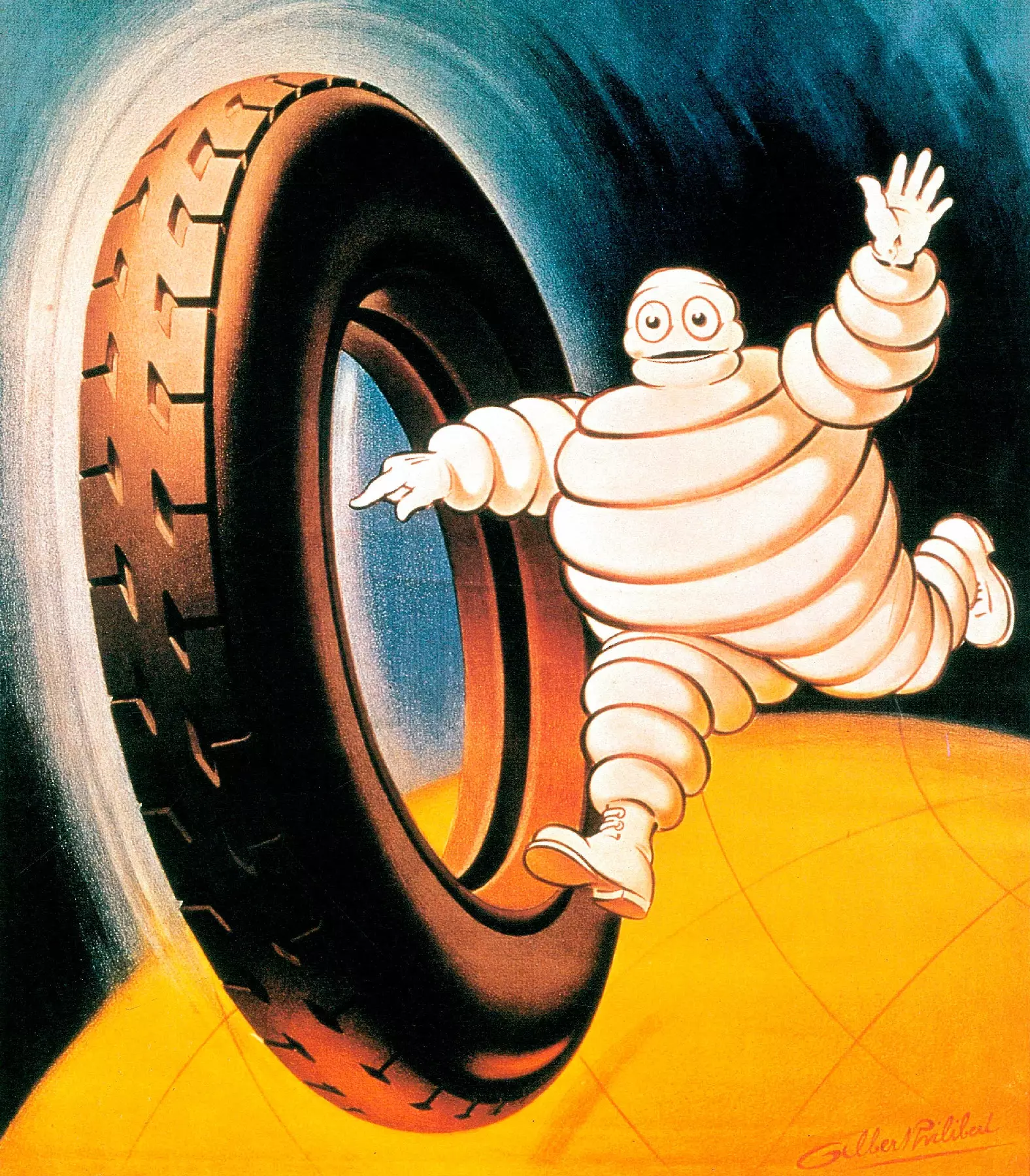
Bibendum turns 120 years old!
In Spain it is known as the Michelin doll, because it is the image of the French tire manufacturer. Its resounding image, built with overlapping tires, has given its name to the 'floats' or lorzas of the chubby, a meaning that has been collected for years by the dictionary of the Royal Spanish Academy.
But his real name is Bibendum and he was born in France 120 years ago. Despite his seniority, he is a hundred years old! Bibendum is younger than ever and is the most famous pet in the world.
Last October 1 collected in Times Square (New York) the title of 'Icon of the millenium', the most important award in this sector, given by Advertising Week, which brings together the world leaders in marketing, advertising and branding.
However, Bibendum was already used to receiving worldwide recognition. With the turn of the century, in the middle of 2000 was selected by the Financial Times as 'the best brand icon of all time'.
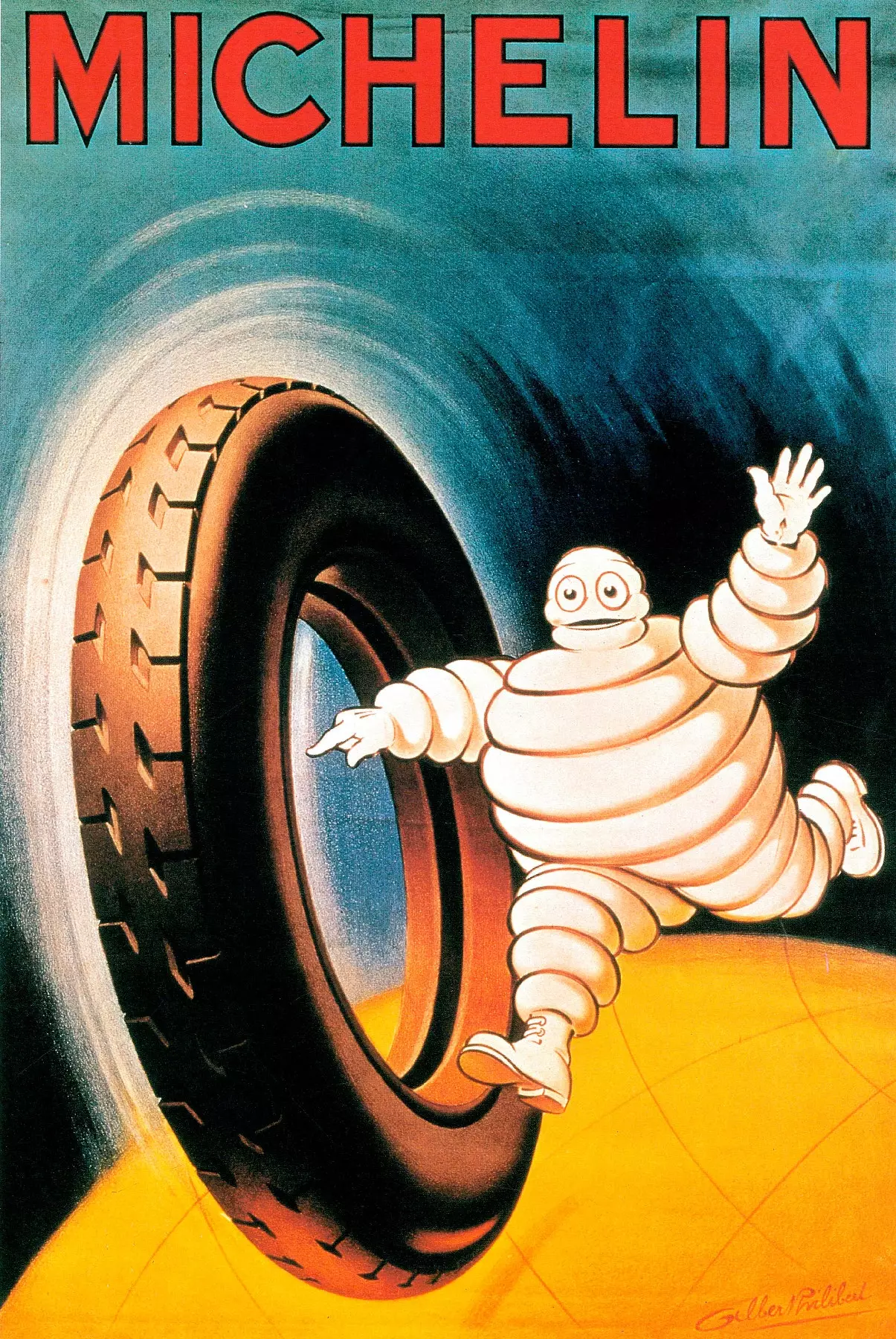
1900 poster
FROM MAPS TO OSCAR
In addition to such prestigious awards, since 1900 it has been the symbol of travel and road safety through maps and the most famous tourist and gastronomic guides in the world, the Michelin Guides.
Bibendum has starred in comics, shop windows, stamps, posters, postcards, key chains, pins, calendars, card games and **even a roundabout in Jerez de la Frontera, ** at the exit of the circuit in which he winks at bikers of all the world.
He appeared in Asterix in Helvetia, in the English version he was a cart salesman, and even he won an Oscar in 2010 with logorama a French animated short film in which he was a hero fighting an evil Ronald McDonald.
Without forgetting that for decades he has been the figurehead of many trucks around the world.
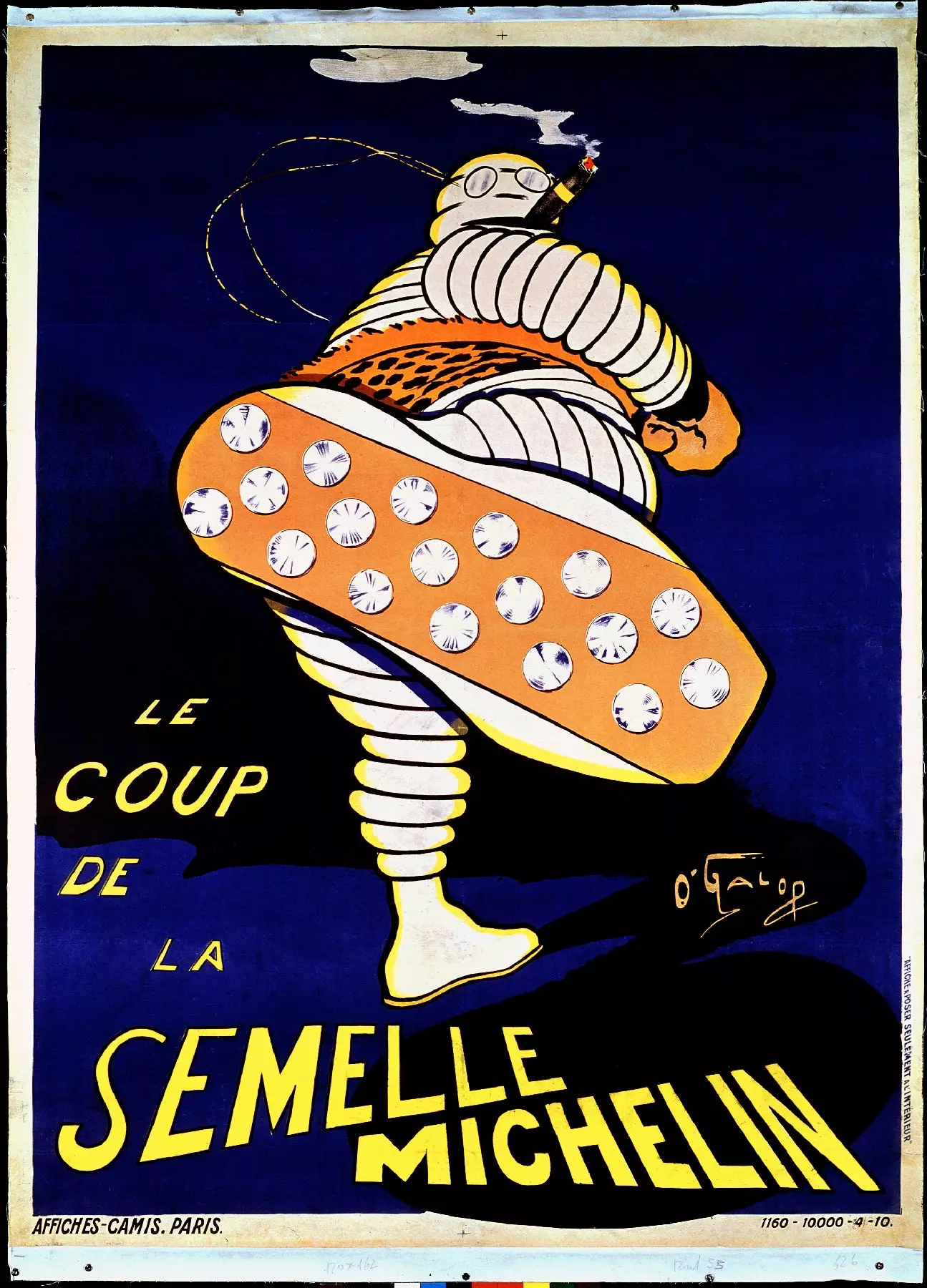
Bibendum in 1905, by O'Galop
The origin
The history of this immortal icon began one day in 1894 during the Universal Exhibition of Lyon (France). That day the brothers Edward and Andre Michelin, who had created their company a few years before, looked with great imagination at the pile of tires that decorated the entrance of their stand and saw a man.
Four years later, in 1898, André met the advertising cartoonist Marius Rossillon, who signed his works as O'Galop. At the end of the 19th century and the beginning of the 20th, advertising always used drawings. So photography was in its infancy, it didn't allow much creativity and it was very expensive.
O'Galop came up with the idea, rejected by a Munich brewery, of a plump figure raising a mug of beer under Horace's phrase “nunc est Bibendum”, which means something like “it's time to drink”. The figure was replaced by the idea of the Michelin, a man's torso made from stacked tires, that it was white because at that time the erasers were sold wrapped in paper of that color.
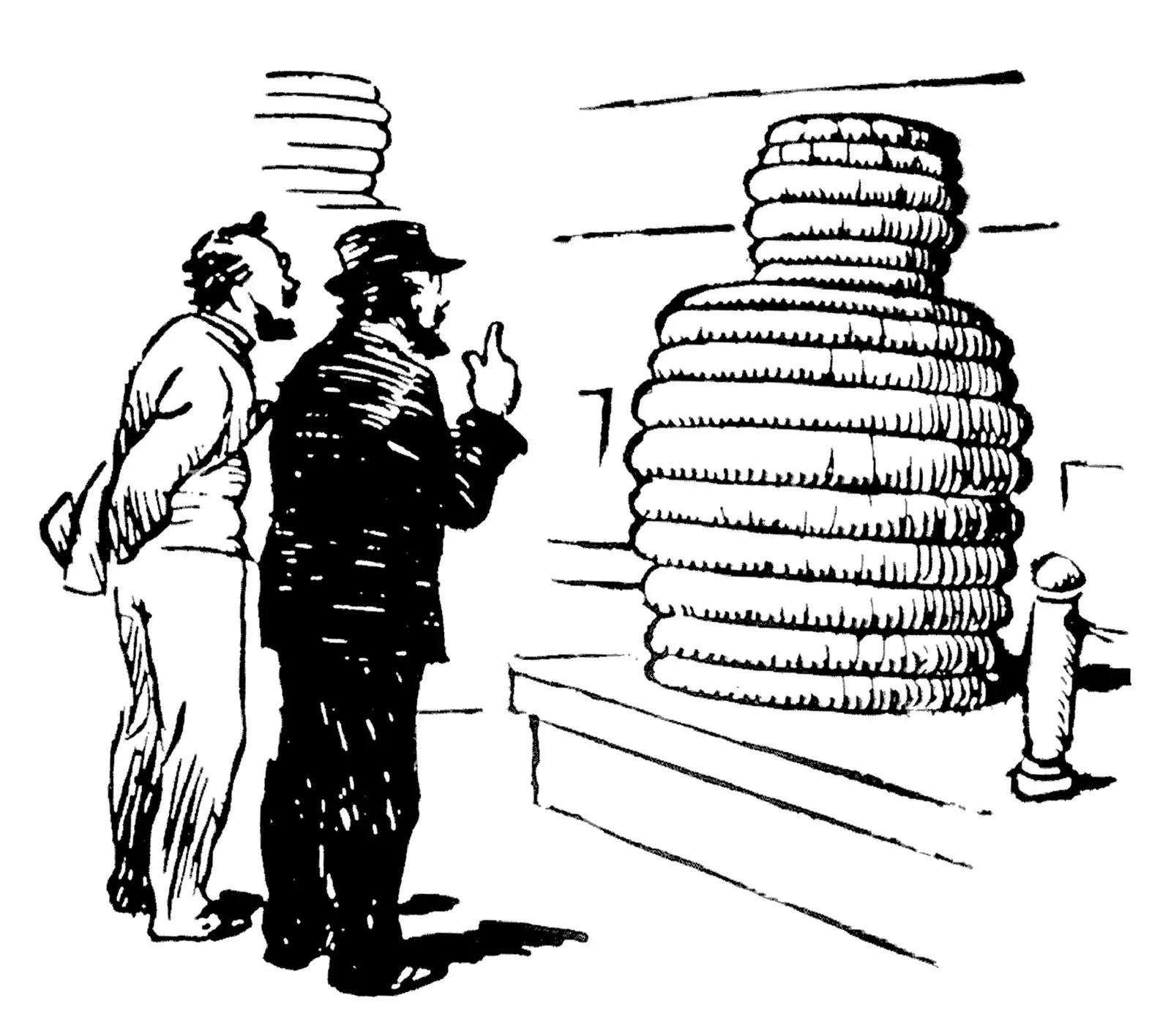
The brainchild of the Michelin brothers
The figure was identified with a potentate of the late nineteenth century, the only ones who could afford the luxury of having a car, with lorgnettes and cigars. today would be enough politically incorrect.
The Michelin man toasts in his first posters with a glass full of broken glass and a free translation of Horacio's phrase: “To your health. Michelin tires eat up obstacles”. A star was born.
People began to refer to him with the flashy Latin word at the top of the poster. The confirmation took place on a circuit, when when André Michelin arrived, a pilot greeted him with the cry "Here comes Bibendum."
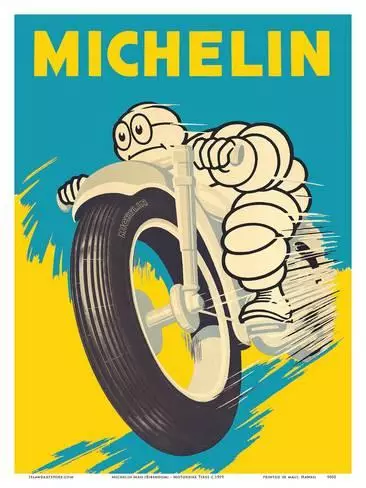
Bibendum at full speed
THE EVOLUTION
In the following years that poster continued to be used, with different variations and with the new Michelin product launches, but until 10 years later, in 1899, it did not appear in print in a newspaper.
Bibendum evolved while the Michelin brothers, with a great commercial vision, exploited it to the maximum in all kinds of advertising messages, surpassing the brand and becoming the symbol of a rapidly modernizing world.
In 1901 the first drawing with legs appears and in 1910 it is already known in the world thanks to its presence in all automobile races of the time.
In 1916 it reaches advertising in the United States and in the 20s he quit smoking and appeared on the move. A more stylized Bibendum runs alongside a tire in the drawings.
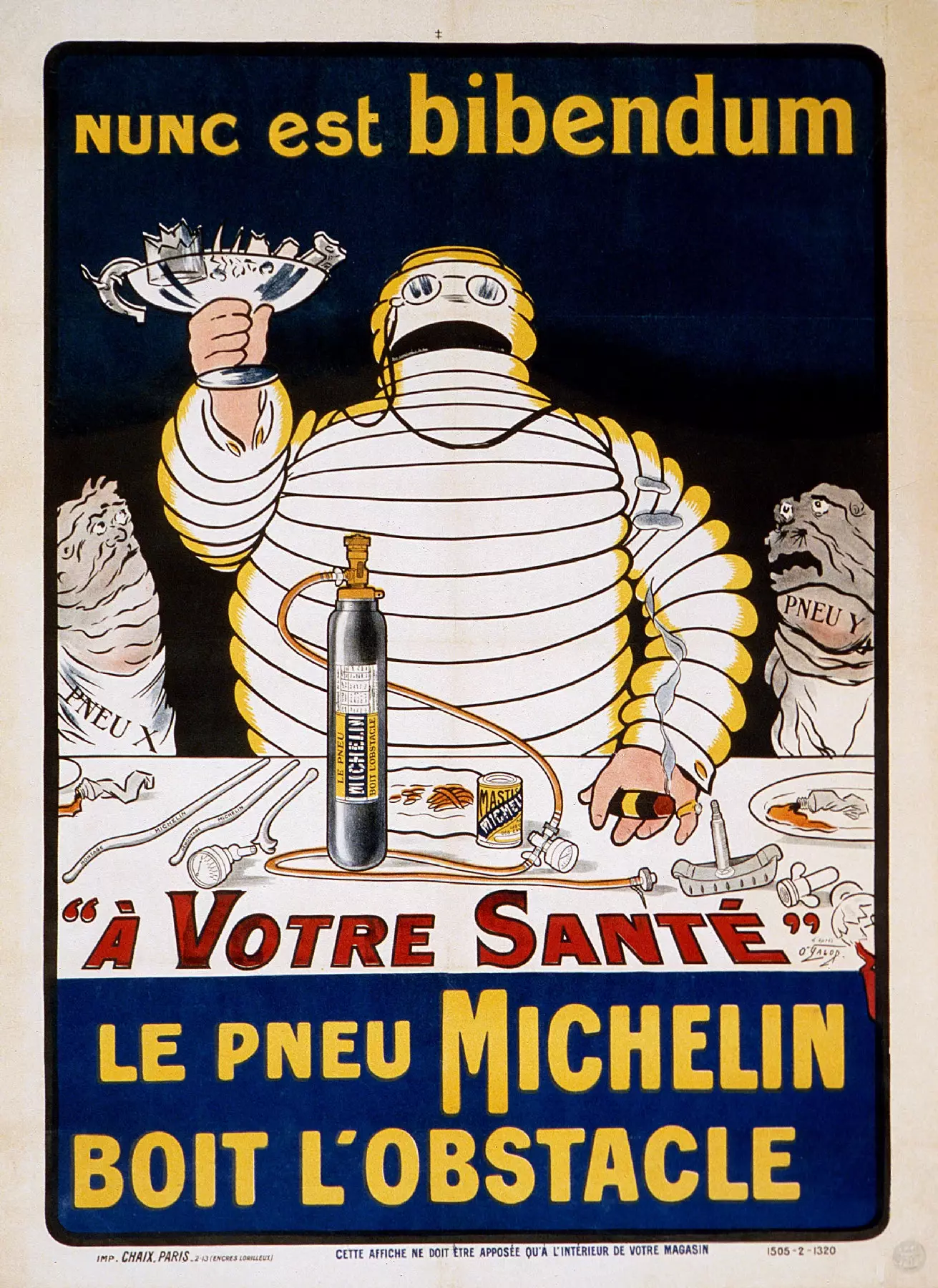
Bibendum in 1913
GASTRONOMIC IMAGE
In the 60s is when its popularity skyrockets and not only because in that decade it began to get on the front of trucks. In 1900, with the beginning of the new century, the Michelin brothers began to publish a series of maps and guides that they distributed among their few clients at the time.
Being a motorist in Europe at the beginning of the 20th century was an adventure, more complex than going to the Himalayas now. Few and bad roads, few gas stations and hidden workshops, the guides became an essential survival tool because they also included places to eat or sleep on the intrepid trips.
Bibendum was the image of the first guide, launched in 1900 in France and 10 years after Spain, and has remained so until now when there are already 23 annual editions.
In the 1920s, the Michelin guides were taking the form we know today. It was established star rating of restaurants and the rules were set to reward establishments.
Forty years later, with the travel boom of the 1960s, the guides became one more element of the automobiles. Today they combine the paper format with the digital one, but their function remains the same… to help motorists.
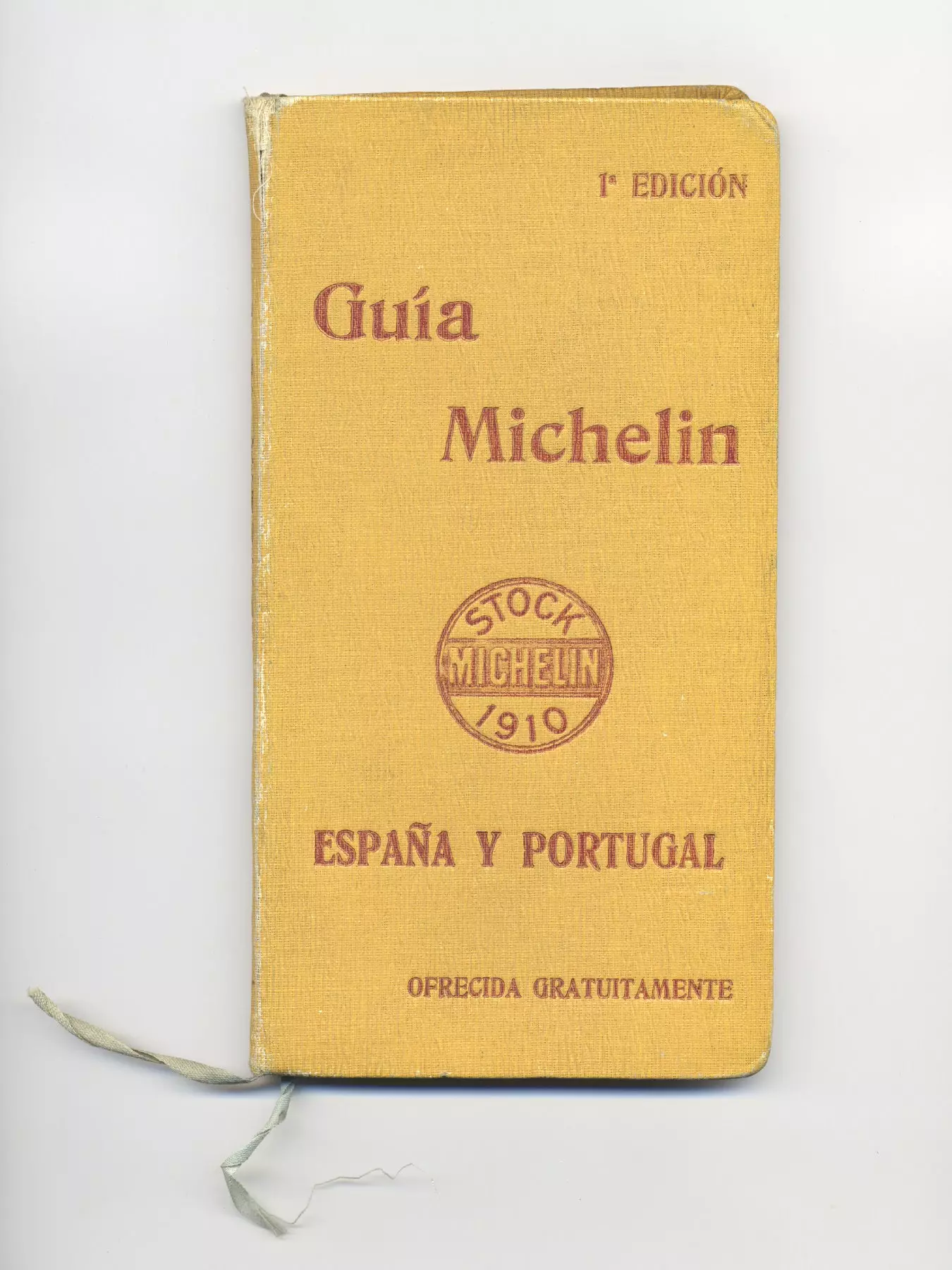
The first Michelin Guide of Spain (1910)
